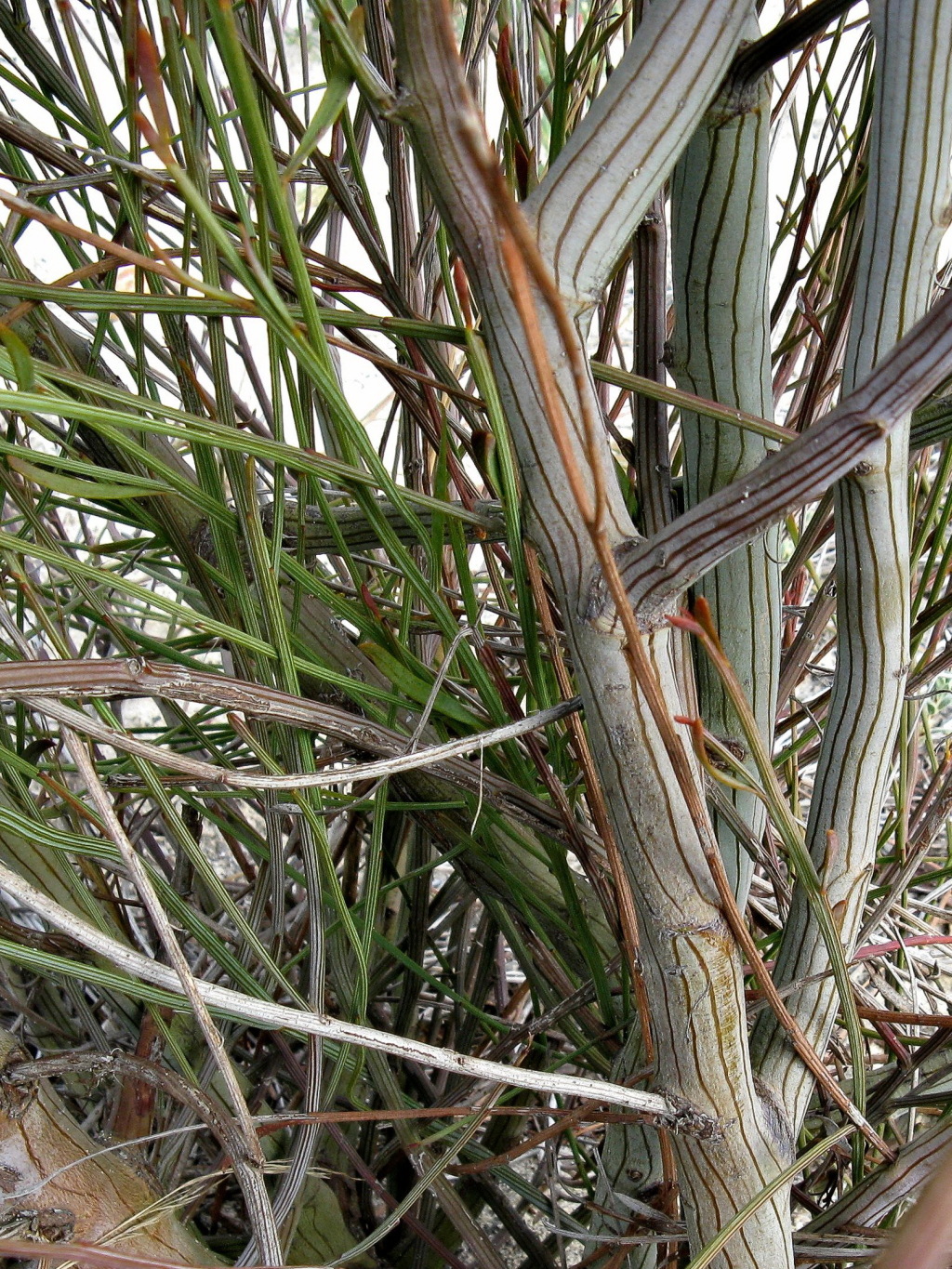Exocarpos
Bisexual or dioecious (E. acerbus) shrubs or trees, rarely prostrate; branches terete or angular, glabrous, pubescent or scabrous. Leaves alternate, sometimes opposite, persistent or caducous, usually small and scale-like, often larger on young stems. Inflorescence an axillary spike or cluster (only 1 or 2 upper flowers in each inflorescence producing fruit). Flowers minute, mostly bisexual, sessile or subsessile, greenish-yellow, sometimes tinged red; tepals 4 or 5, free, persistent or caducous; stamens 4 or 5, inserted near base of tepals, often incurved over style; ovary superior or inferior (E. acerbus), conical, fleshy, stigma sessile or subsessile, often lobed. Fruit a drupe or nut, more or less globose, on an enlarged succulent receptacle or receptacle neither enlarged nor succulent (E. acerbus); exocarp thin, green or brown.
27 species, in South-east Asia and Pacific islands; 12 species in Australia.
Host species include members of the families Casuarinaceae, Fabaceae, Myrtaceae and Proteaceae. The fruiting receptacle of some species is edible.
A recent molecular phylogenetic study of part of the Santalaceae has found that the monotypic Omphacomeria is nested in Exocarpos (Pillon et al. 2023).
Jeanes, J.A. (1999). Exocarpos. In: Walsh, N.G.; Entwisle, T.J., Flora of Victoria Vol. 4, Cornaceae to Asteraceae, pp. 27–29. Inkata Press, Melbourne.
 Spinning
Spinning



